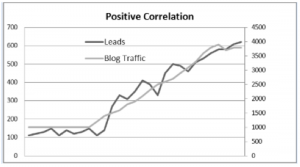The ROI of Calculating Your Marketing ROI

In our last post, we explored the five categories of marketing metrics, closing with a brief mention of one of the most popular measurement tools in marketing today: ROI. In today’s post, I want to explore ROI in more depth.
We put ROI in the impact category, which I’ve sometimes referred to as the value category. ROI is indeed a calculation of value. While ROI is typically associated with financials, it’s important to understand that “value” itself doesn’t just come in a pure monetary form. We’ll come back to a discussion about value in a few minutes, but first, let’s explore ROI a little deeper.
ROI essentially measures two things: money and time. More specifically, you can use ROI calculations to determine how long it will take to recoup the cost of a specific investment.
 When it comes to money, remember that nothing is free. This is especially true in the world of social media. You think Facebook is free? Think again! As we say in the social media world, “if you’re not paying for the product, you are the product.”
When it comes to money, remember that nothing is free. This is especially true in the world of social media. You think Facebook is free? Think again! As we say in the social media world, “if you’re not paying for the product, you are the product.”
There are a lot of tangibles in calculating social media ROI, and even more intangibles. Let’s talk about both.
The tangibles of ROI can be expressed in a very simple equation. ROI, when expressed as a percentage, is the revenue that is generated from your investment, minus the cost of that investment, divided by the cost of that investment.
![]()
Gains are the total revenue generated that can be attributed to the program or campaign. If the program or campaign is not aimed at revenue generation, you can substitute “cost savings” for gains.
Costs are the total cost of program or campaign, including both hard costs and staff time, typically calculated by percentage of full-time equivalent (FTE) salary or hourly rates. Note the phrase “can be attributed.” Attribution is the hard part. Why?

By looking at this graph (courtesy of Paul Gillin), can we clearly attribute the rise in leads to the increase in blog traffic? Is there causality, or mere correlation? We can’t know unless we actively are inserting signals indicating our involvement. One great signal is the Google Analytics Campaign Code, which I encourage you to use.
Another tactic that gets you even closer to ROI numbers is to assign value to goal conversion pages in Google Analytics. If you know, for instance, that your average individual web sale is $100, and after some testing, 10 percent of the people who fill out your “send me more information” web page form eventually convert and purchase your product, you can confidently assign the average value of a visitor to that page at $10. The trick is to leave as little to the imagination as possible.
Before I close, we can’t afford to ignore the more intangible indications of value, which can range from increased customer satisfaction, loyalty and engagement to improved reputation, market influence and leadership. Gillin’s post captures these intangibles nicely–they shouldn’t be ignored just because your boss wants to see financial ROI numbers.
Especially in the light of all of these intangible forms of value, it should be clear that ROI is not the be-all, end-all marketing metric. The industry is working on better ways to measure and calculate the value of its tools, services and techniques. But until our vendors make the effort to embrace standards and interact with other vendors to create new standards, the work is -fl -pr3 -pb3 to us, the marketing practitioners tasked with demonstrating the value of all of our efforts. For now, ROI will have to suffice.

Todd Van Hoosear
Todd Van Hoosear is vice president of public relations for Eric Mower + Associates' Boston office, where he helps clients in the engineering, mobile, cloud, networking, consumer technology and consulting spaces bring new ideas – and new takes on old ideas – to the market. He also teaches new media and public relations at Boston University, and serves as a Fellow at the Society for New Communications Research. Find him on Twitter at @vanhoosear.
